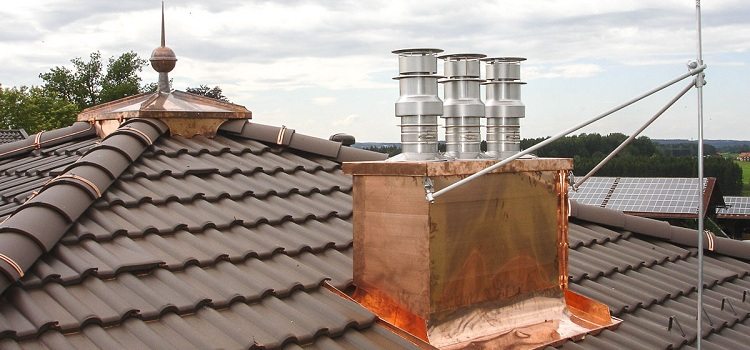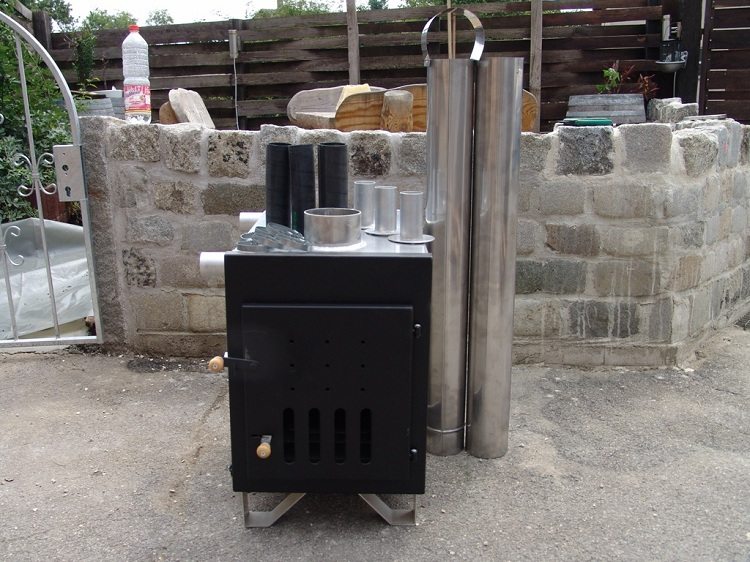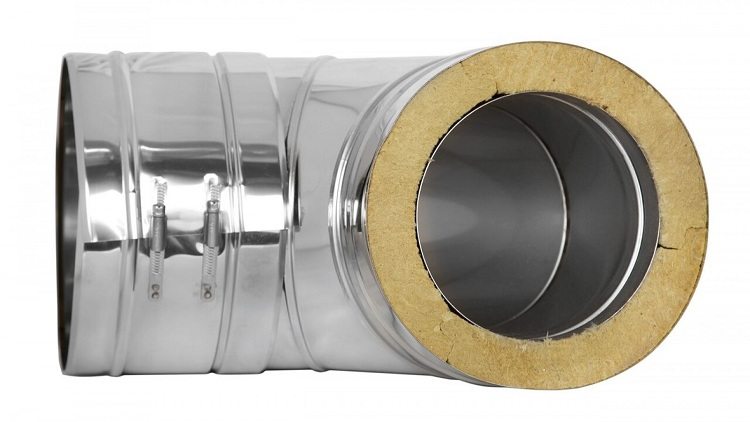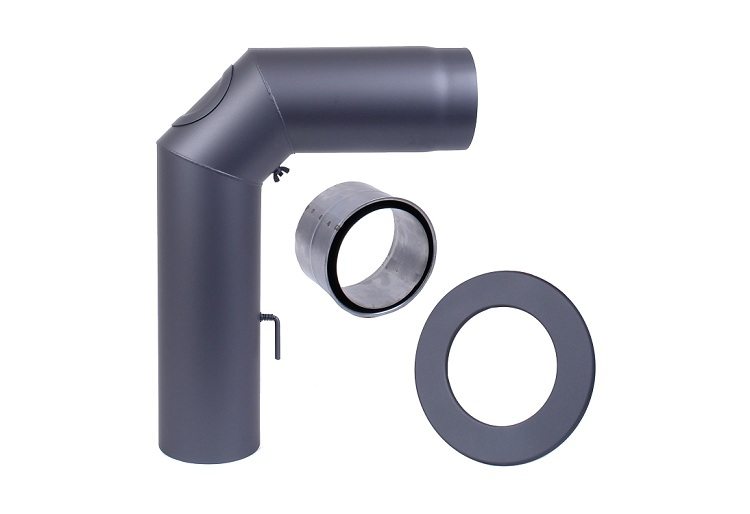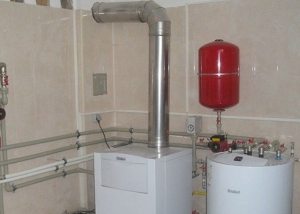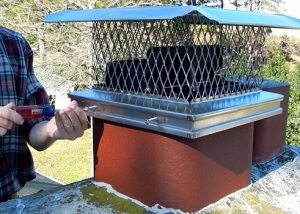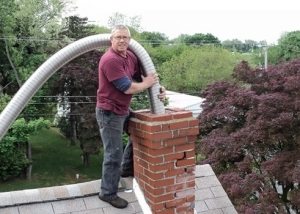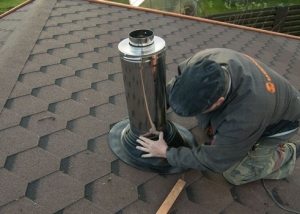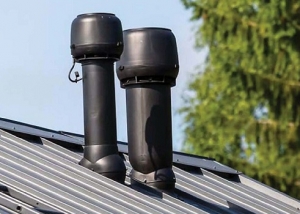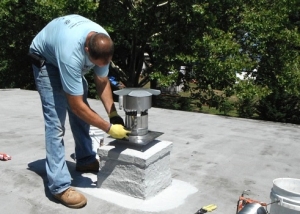An effective heating system in a private house cannot do without a complete removal of the products of combustion of the kind of fuel that a boiler, fireplace or stove is designed for. When arranging chimneys, it is important to know their varieties, as well as the technical characteristics of each type of component. This will help to choose such pipes that will not be expensive, but will meet all operational requirements. Today, the most popular are metal chimneys or pipes made of galvanized steel. They have their advantages and disadvantages, which are important to know about before you begin installation.
Content [Hide]
Why does the chimney need galvanization?
Stone and brick chimneys are gradually losing relevance, they are replaced by modular metal pipes, which are easy to assemble with your own hands. The galvanized pipe for the chimney is a completely affordable variety, and the coated metal is reliably protected from corrosion. Simplicity of design, where each pipe has one extended end, the other is narrowed, easy to assemble and without special skills in such work. Chimneys are sold ready-made and in the form of separate components, which is convenient when arranging a heating system in a non-standard building.
Galvanizing metal is designed to solve the main problem of metal products - corrosion protection, which over time destroys the pipe of any functional. Iron is most susceptible to destruction from rust, which corrodes it under one condition - the simultaneous access of water and oxygen.
In chimneys, there is always moisture released during the combustion of fuel and the formation of condensate in the area without insulation. A chemical reaction takes place where iron oxide is formed. It gradually accumulates, destroying new layers of the metal product. There are various alloys and grades of steel that can partially solve this problem. One of the most effective barriers to metal corrosion is a small “plaque” of zinc. Such products are called “galvanized”, and the process of processing the pipe is galvanized.
It is interesting! Galvanization is carried out only in industrial conditions. The steel product is immersed in a special molten mass with a reagent that promotes the combination of iron with zinc ions. The new protective layer is visible visually - in the light it is somewhat reminiscent of crystalline stains on the surface of iron or steel. Crystals are noticeable on new galvanized parts, but over time the layer erases and dims. Although this layer is a few microns thick, it is sufficient to protect the galvanized chimney pipe and extend its life.
The practical use of galvanized chimneys shows their advantage over other types of exhaust systems of combustion products. Brick chimney is more bulky, a lot of soot settles on it, so frequent cleaning is required. During fuel combustion, the gases passing through a round galvanized chimney only partially form an acid precipitate and soot deposited on the pipe.
This layer is detrimental to any chimney material, especially when there is cooling vapor that falls onto the cooling surface with drops of condensate. Roughnesses form from streaks, sediment adheres to them, and draft decreases. With a clogged chimney, the combustion products are partially discharged, and smoke, carbon monoxide and third-party odors enter the living room.
Cleaning the chimney pipes partially saves the situation, but the more preconditions for the formation of condensate, the less it will last. The best solution is to use this design of the chimney, where there is a special valve to remove excess moisture. One of the simplest solutions to counter condensation is chimney insulation, and corrosion - the use of pipes made of galvanized steel or stainless steel.
Galvanized pipes are the solution to many problems.
The presence of a protective zinc layer is the main advantage of a conventional metal pipe. Then the condensate produces minimal destruction of the chimney. Therefore, experts choose galvanized steel pipes for any type of chimney:
- under the fireplace;
- for baths and saunas;
- for heating private homes;
- for small country houses.
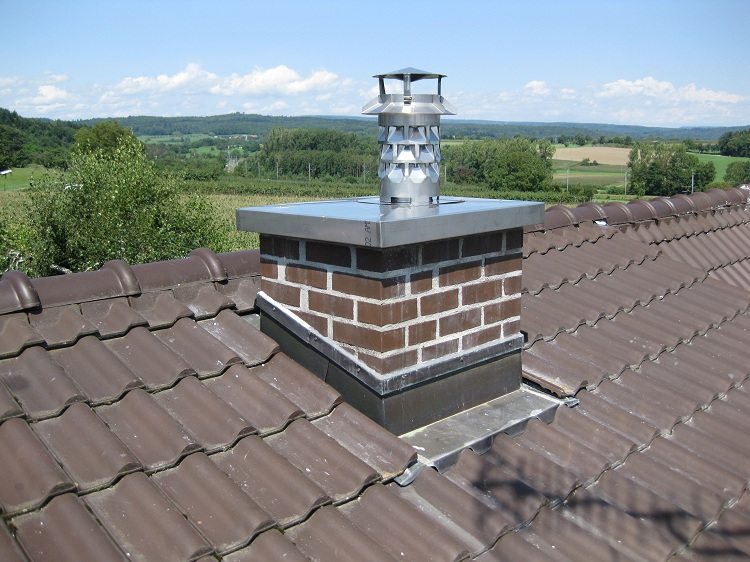
Galvanized pipes come in different types and shapes, they are installed in residential buildings and temporary buildings
Galvanized pipes for chimneys are made of durable sheet steel, which assumes elastic molding of products (thin layer). Outwardly, it seems that this is an ordinary “tin”, but it is this protective layer of not more than 50-60 microns that provides sufficient protection for the chimney.
Galvanized chimney has many advantages:
- pipe walls are reliably protected from acids and condensate;
- the design quickly warms up, creating a stable traction;
- the modular (assembled) chimney is quickly mounted, thanks to the thoughtful joint of pipes;
- easy to assemble in the home with your own hands and install as directed;
- universal pipes, suitable for household heating appliances of various types;
- damaged or missing fragment is easy to replace without disassembling the entire chimney;
- galvanized pipes for the chimney are completely fireproof if they are mounted on special supports so that they do not come into contact with flammable materials (for example, wood);
- easy to connect to the nozzle of any boiler or other heating device, thanks to the presence of special transitional parts available on the construction market.
Note! Galvanized chimney is more in demand than a brick pipe. They can even be attached after the construction of a private house is completed. For example, this is an excellent solution for an easy extension, where heating was not originally thought out.
A galvanized chimney can be carried out inside the building through the roof or led out through the wall to the outside, but it is important to properly insulate it. Do not save on materials and components - this will result in high costs during operation.
Classification and accessories for galvanized chimneys
Galvanized chimney pipe is available in the following varieties:
- single-circuit (conventional);
- double-circuit (double, with a layer of insulation).
Single-circuit galvanized pipes. They are used inside a residential building or brick chimney mine, they do not require additional insulation. The chimney is completed with auxiliary elements used for articulation, inclined and rotary sections, branches and parts of auxiliary functionality:
- tees;
- adapters;
- couplings;
- revisions;
- valve for condensate discharge;
- supports for mounting to vertical surfaces.
Simple construction is widely used in buildings that are not used in winter. For example, in a bathhouse in the country, when you want to heat the room in the off-season.A single-circuit steel or galvanized chimney is easiest to assemble with your own hands, but it has a significant drawback - increased condensation.
Often galvanized pipes are used to more efficiently equip the smoke ducts of old brick buildings. This helps partially protect the masonry from further damage and reduce the amount of soot deposited on its inner surface.
Advice! Do not use single-circuit galvanizing for chimneys that are led out without insulation. Condensate will quickly destroy the pipe, in winter it is more difficult to warm up to a stable draft. This option is applicable only as a temporary measure. For example, in an unfinished summer cottage, when there are no conditions to make a full-fledged insulated chimney, and it is necessary to heat the room to complete the work.
Double-circuit galvanized pipes. They are most in demand due to their versatility and durability. These are the so-called "sandwich systems", produced in the form of 2 pipes with a layer between them. To produce these products, high-quality stainless steel and galvanization are used.
Galvanized double-circuit chimneys are more affordable, but their service life is lower than that of a stainless steel sandwich chimney. Usually only the outer surface is galvanized. The inner one, adjacent to the basalt wool insulation, does not have such a coating. But at the same time, the galvanized chimney is protected both inside and out. The main load is on the inner pipe, so it is made thicker, with a reinforced layer of galvanization.
Ready-made chimneys of the “sandwich” type made of galvanized steel have an aesthetic appearance, thanks to the special powder spraying characteristic of metal products. This heat-resistant enamel adheres to the surface for a long period - the product looks like a new one for a long time.
The main advantages of a double-circuit galvanized chimney:
- design reliability;
- high efficiency of a boiler or other heating equipment;
- effective protection against condensate;
- withstands temperatures up to 450 ° C;
- general aesthetics.
Advice! If the owner is not satisfied with the appearance of the pipe sticking out of the wall of the house, you can cover the chimney exit with additional masonry or paint it to match the color of the exterior walls.
When choosing a chimney made of galvanized metal or its individual parts, it is important to consider the diameters of the pipes so that they pass through the intended hole and fit together. When buying, it is important to clarify all the technical specifications described in the instructions for the purchased parts. A chimney made of high-quality stainless steel will last longer than galvanized, but it costs an order of magnitude more. But galvanizing is enough with a low load on the heating system, the main thing is to perform the installation correctly.
